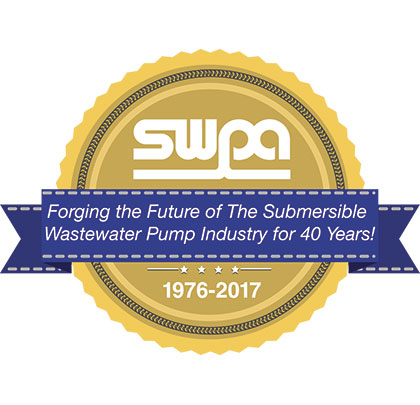Operators are constantly looking for methods to improve the life cycle and lower ownership costs for submersible pumps. One strategy that SWPA has advocated is the “Systems Approach,” which address not the pump as a stand-alone item, but as one component of a larger system. Better understand the system, and the pump will perform better. Below, SWPA Executive Director Adam Stolberg and SWPA member Walt Erndt, vice president and general manager for municipal market at Crane Pumps and Systems, discuss some of the long-term benefits of the total systems approach.
How does taking the “Systems Approach” allow operators to better assess performance for long-term planning?
Designing a system is a fluid process. That is, the procedure itself has to be adapted to the situation in which it is being applied. Under the Systems Approach, efforts are made to identify all user needs and requirements, equipment performance specifications, regulatory constraints, peak operating conditions, and other factors impacting the system’s performance before the formal design process is initiated. This will include investigating potential build-out of the system and future hydraulic requirements due to growth within the community. Upgradability must be considered for the complete system, not just the pump.
For complex pumping stations, each component is a potential troubleshooting spot. How does the Systems Approach better serve these set-ups over the course of their life cycle?
The System Approach establishes performance optimization by assuring that the many components in the system operate efficiently and effectively in concert with each other. The objective is to increase the mean-time-between-failure for all performance critical components in the system. Component reliability is researched and the higher performance components specified. Although many system components are independent of each other, they must be carefully matched because the performance and operation of each impacts all the others. These system components typically include the source and designation tanks, individual pipelines, pumps, valves, and items that control the rate or direction of flow.
When using the Systems Approach for a pump application, what role does the end user’s needs and specifications play?
Under the Systems Approach to pump station design, efforts are made to identify all user needs and requirements. These factors may include:
- User performance requirements or standards
- Cost considerations
- Determining the proper horsepower and impeller size of pumps
- Determining the proper power requirements
- Sizing the wet well, frame and covers, valves, and other ancillary equipment
- Station delivery schedule
- Federal, state, and local regulations
- Component availability
- Operator training and safety requirements
- Maintenance requirements
- Field support considerations
The defined user’s needs provide the foundation for the conceptual design of the pump station.
In what ways have you found that using the Systems Approach has led to greater efficiencies and helped the bottom line?
Submersible wastewater pumps, which are often purchased as individual components, provide a service only when operating as part of a total system. The proper design of that system—a submersible pump lift station—depends on many mutually dependent factors because these pumping stations are complex and their design requires considerable engineering expertise. By better understanding wet well design, hydraulics, and all of the components that make up these systems, “bottom-line” performance is optimized. The Systems Approach encourages careful analysis of requirements to determine if the pump and each of the system components is efficiently sized and configured to meet the end-user requirements; screening the system to help optimize improvement opportunities; calculating life cycle costing for maximum energy efficiency; and finding symptoms that could lead to inefficiencies.
How does the Systems Approach better allow for performance assessments and making year-to-year goal planning?
When using the Systems Approach, component reliability is researched and the higher performance components specified. Although many system components are independent of each other, they must be carefully matched for the life of the system. The Systems Approach ensures that the design of the pump, the design of the system and the design of the installation are aligned. This alignment helps the end user estimate the life of the system and total operation and maintenance cost over the life of the system. In addition the Systems Approach determines “unit” responsibility because:
- Complex systems with multiple component parts such as pumps, control systems, valves, and special start/stop units require unit responsibility
- Unit responsibility eliminates the questioning of cause of failure and isolates it under a single source
- Reduces the time element for repairs
- Provides single source test standards
- Provides single source engineering, application, and operation manuals
SWPA will be host a two-day, hands-on training seminar based on the Systems Approach in Chicago on March 14 and 15. For registration information, contact SWPA Executive Director Adam Stolberg at swpaexdir@sbcglobal.net. Mention MPT to receive $50 off the registration fee.
____________________________________________
MODERN PUMPING TODAY, January 2018
Did you enjoy this article?
Subscribe to the FREE Digital Edition of Modern Pumping Today Magazine!
![]()


